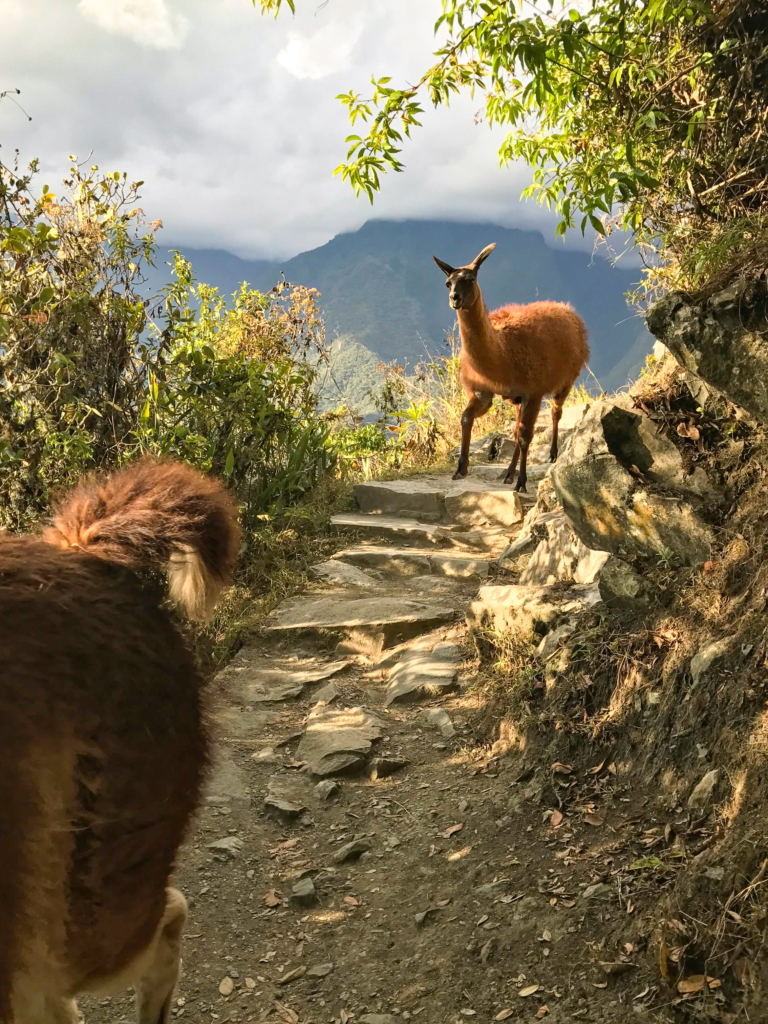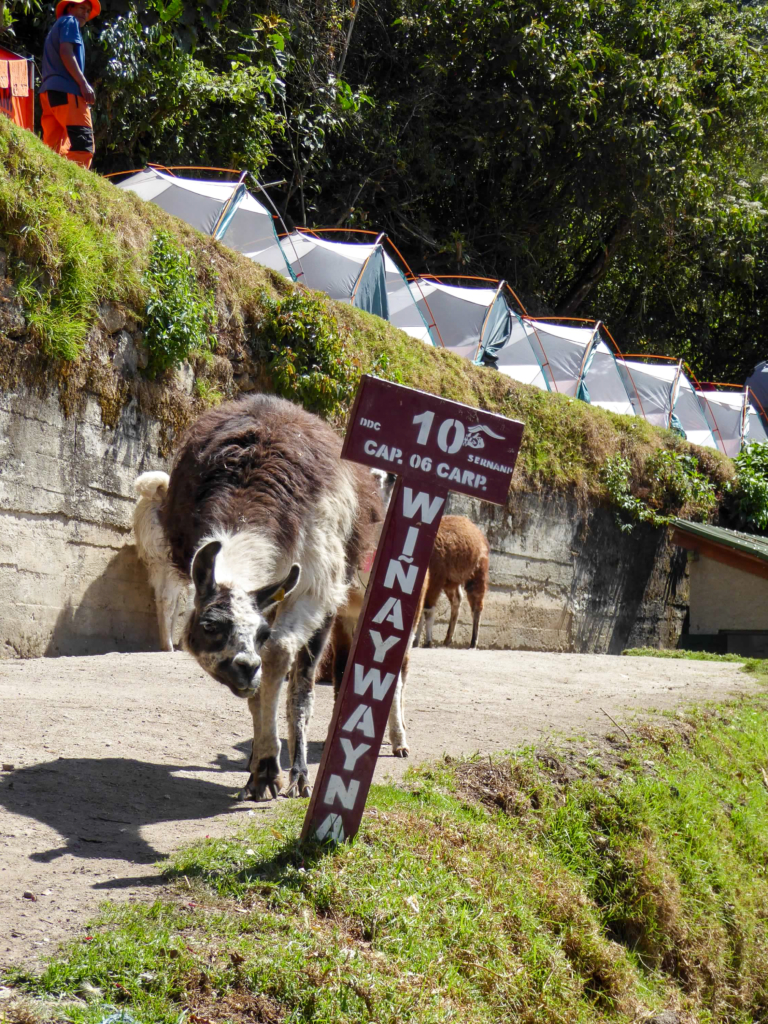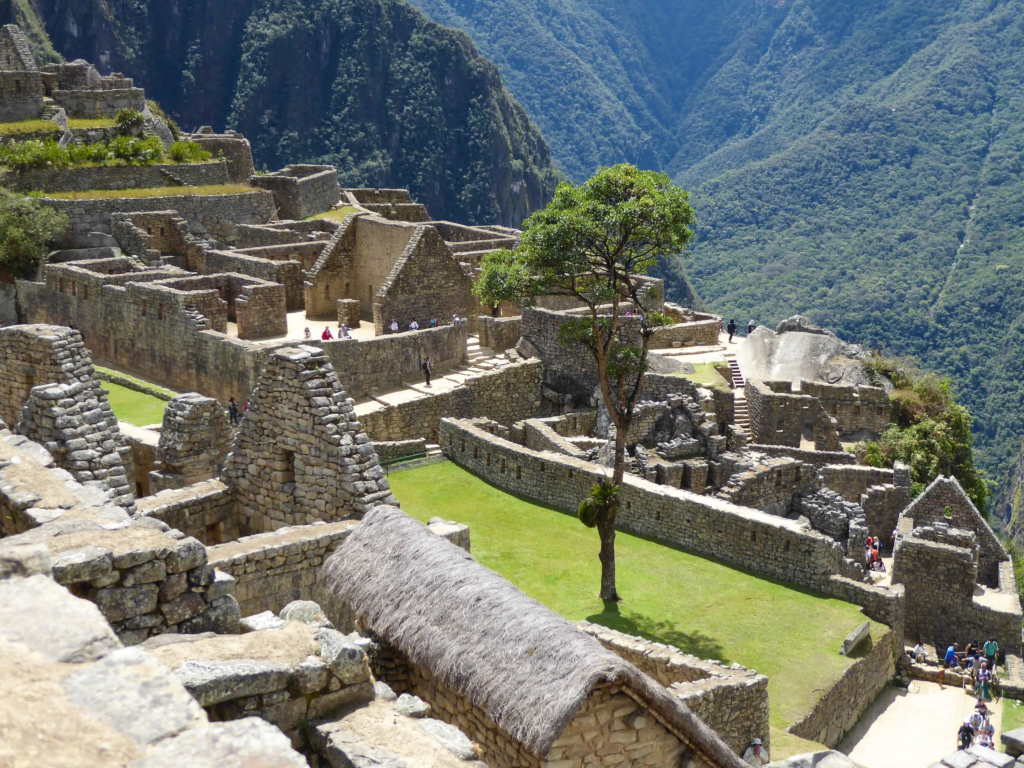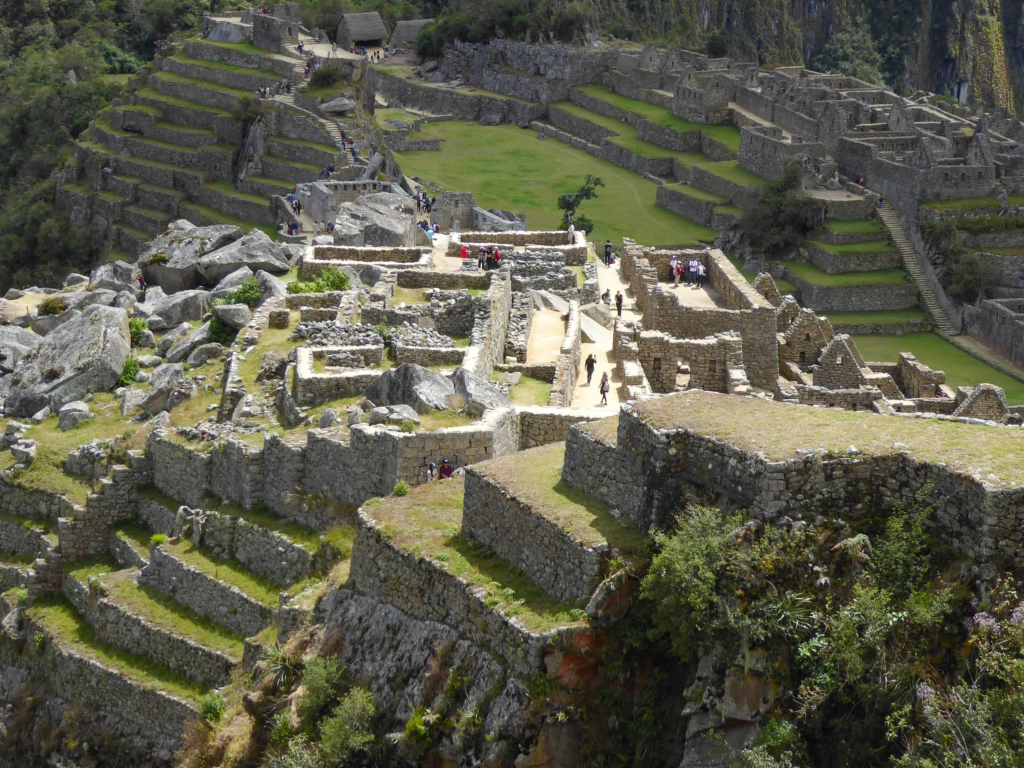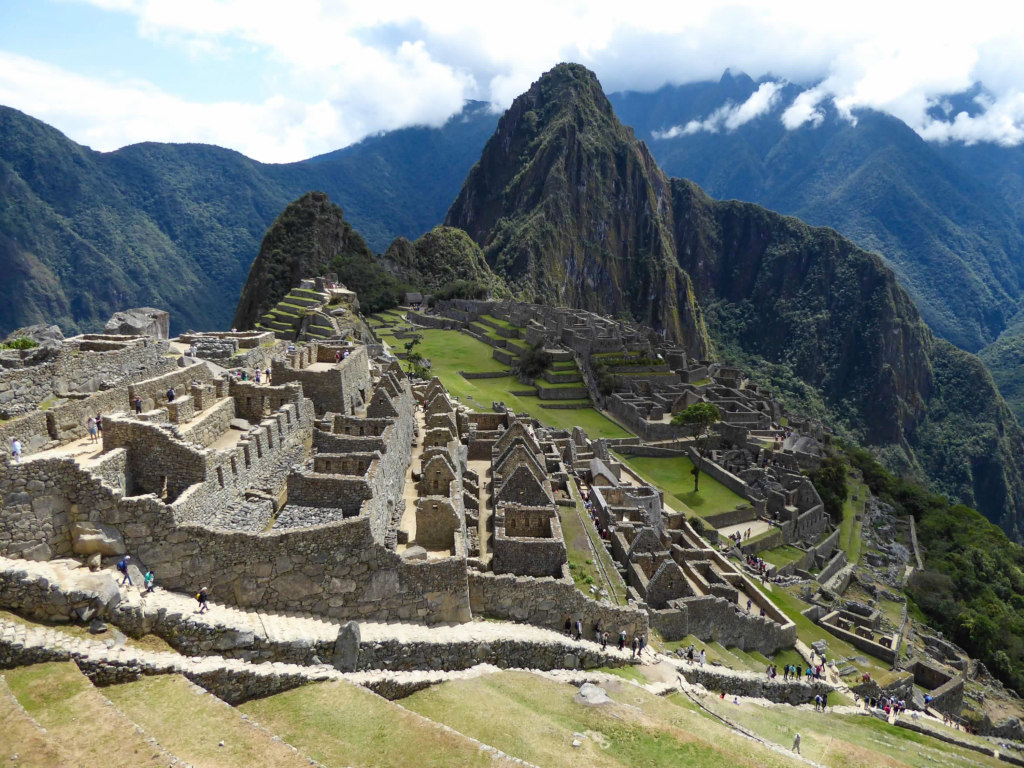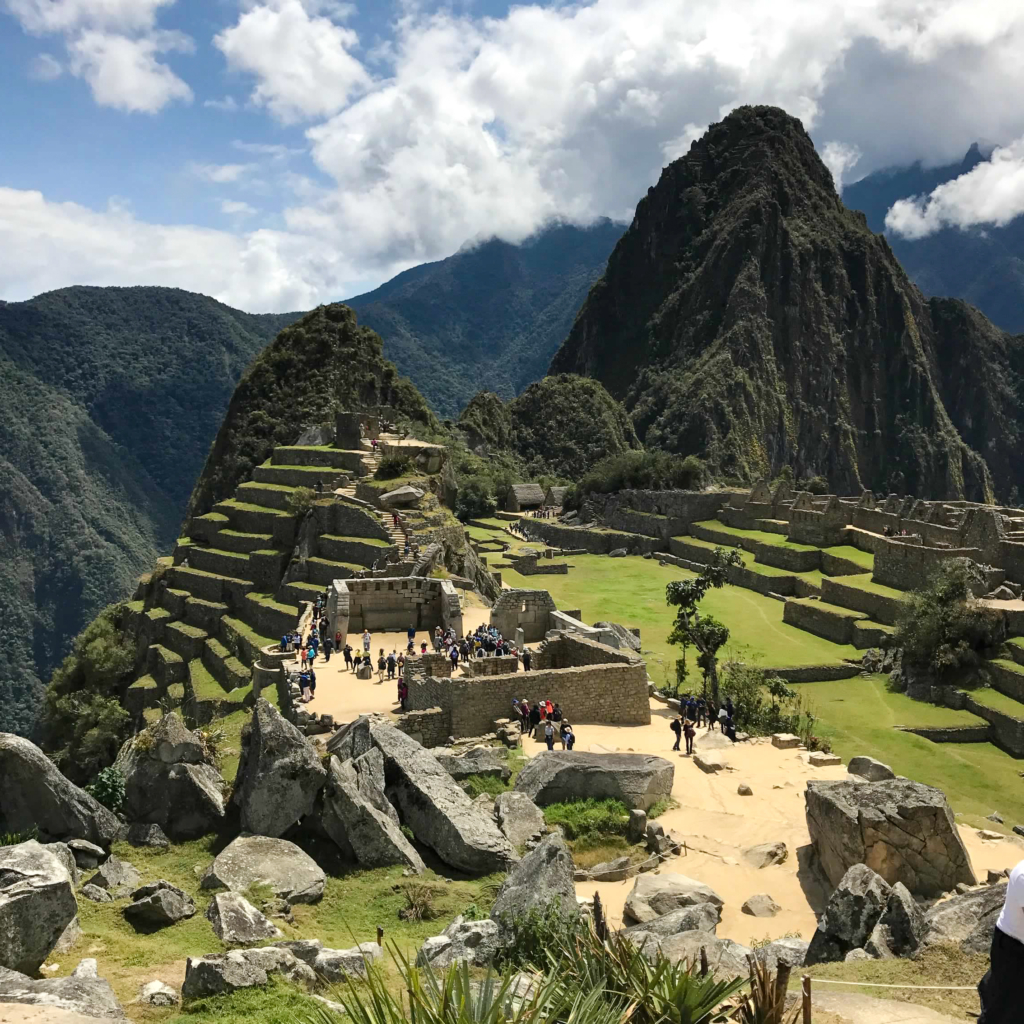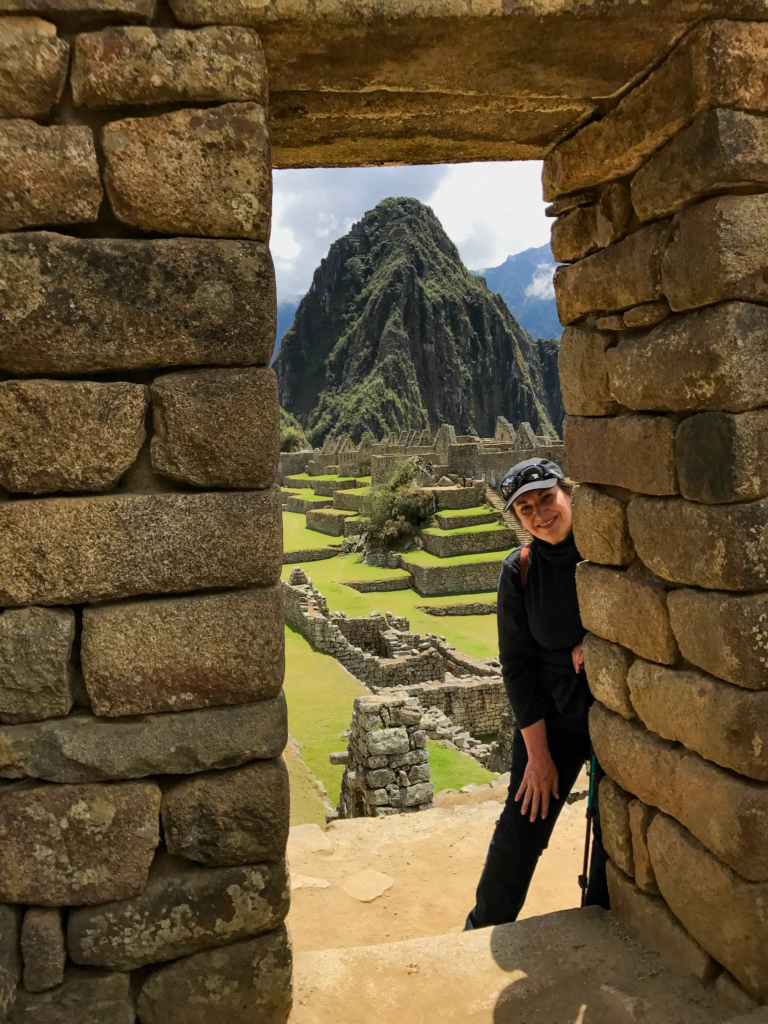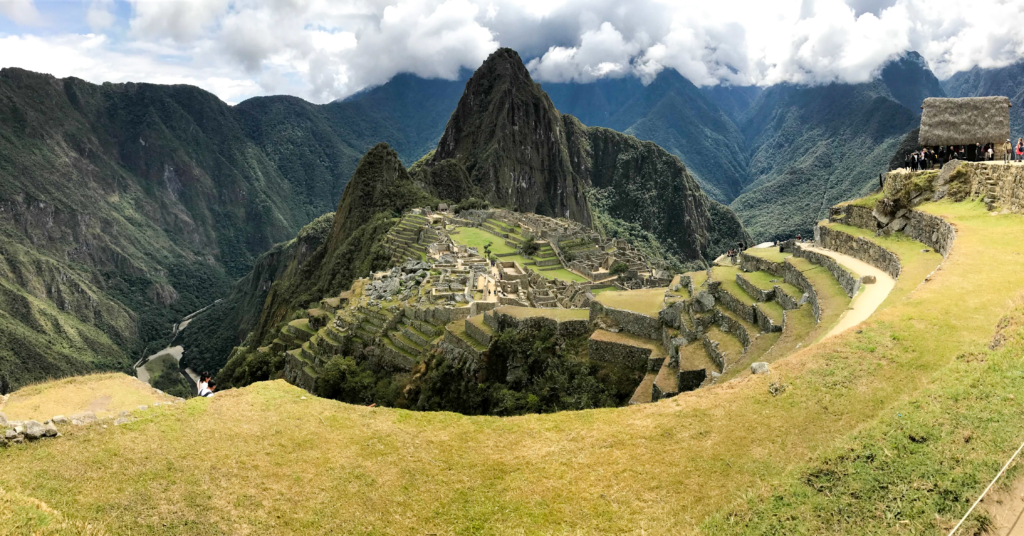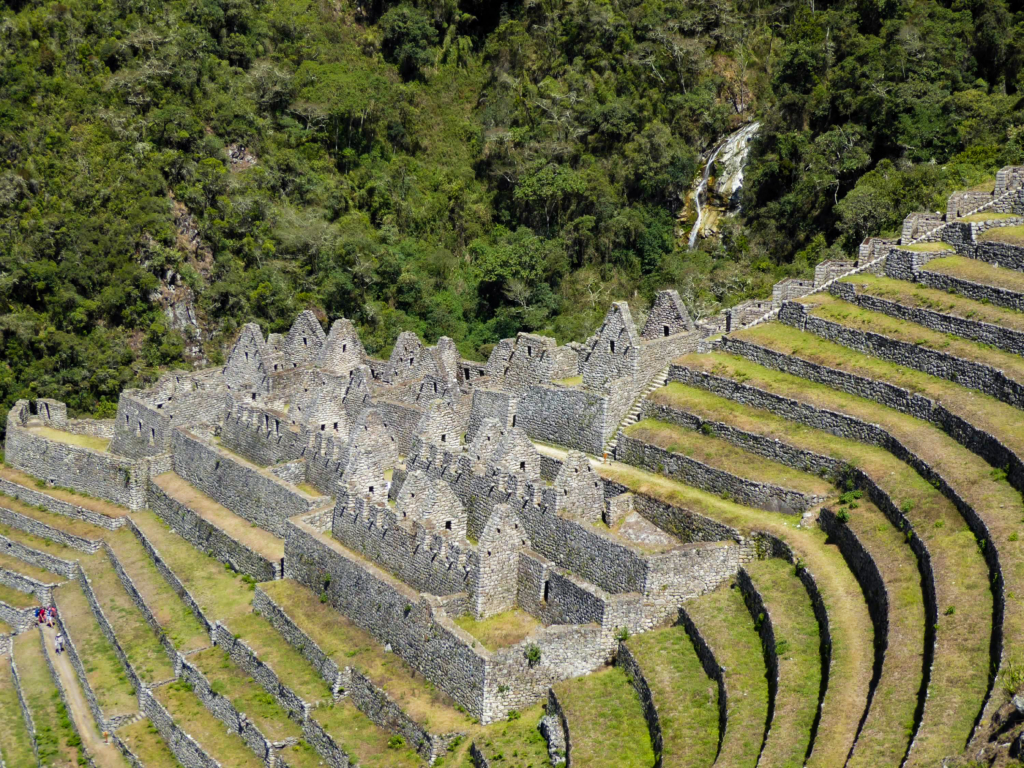The following was taken from my post on TripAdvisor (September 2, 2017)
If you subscribe to the definition of a pilgrimage being “a long journey to a sacred place” then the Inca Trail from KM104 (one day hike) is for you! The books we read prior to the trip said the distance from KM104 to Machu Picchu was 5.6 miles – we tracked our journey on two devices at 7.19 miles, climbed from 6000′ to 9240′, and the trek required 33,000 steps. It took 8 hours and 45 minutes. (Two marathon runners who train at altitude made the same trek the next day in 4 hours and 30 minutes but ran the first half of their hike.)
The trail maps make it look like gradual up and then down which we learned are simply a straight line from one elevation to the next and NOT an indication of the trail. The elevation changes are made through a series of uneven, stone steps that are irregular in size and shape with some stair step depths being extremely narrow (3-4″) and many of the steps being 16-20″ high. Walking poles are a must and while others in our party only used one pole I used two and found them to be extremely helpful as it allowed me to position some of the weight into my shoulders and arms when moving up and down large steps. The trail averages 30-48″ wide and is consistently uneven. You must pay attention so that you don’t trip or fall.
There are a couple of challenges with the trek: Altitude, bathrooms, and heights.
Unless you’ve been training at altitude get ready to have to stop frequently to catch your breath. While our guide carried oxygen for emergencies we were never offered it and frankly never reached a point where we HAD to have it.
The trail is cut into the side of the mountain and there is NO place to pull off and privately use the bathroom. The only bathroom is located at the Trekker’s Hotel (approximately 4-5 hours into our hike) and it is a private hole in the ground. I packed a Freshette but there was no place to use it on the trail and I did not practice with it before leaving home which was a mistake that I learned at the Trekker’s Hotel! As ridiculous as it sounds I would recommend wearing Depends (adult diapers) so that you can go when you need to and then change your “diaper” at the Trekker’s Hotel (placing your soiled diaper in a Ziplock bag to bring down).
Yes, the trail is built into the side of mountains so if you are afraid of heights I would not recommend this trek. Most of the time there is sufficient vegetation to block your view of the height but there are exposed places along the trail where you are aware of the height and the dangerous edge that you are walking along.
Llama’s have the right of way! Yes, there are wild Llamas on the trek and you must allow them to pass you. The typical llama that we passed required approximately 18-24″ of the path (and they can kick if upset) and so creating enough space for them to pass is no small feat.
Key success factors: Weather, your guide, equipment, physical training prior to the trip, rest when you can, stay hydrated, and eat.
You have to pack for the unknowns such as weather. While I was prepared for rain and chilly temperatures our hike was in full sun and 80 degree temperatures (which our guide said was extremely hot). We could not have known the weather in advance – you have to go prepared for the unknown. If it is raining DO NOT make the trek as the rocks are slippery even when dry.
Your guide is critical to the hike’s success. Guides are required to have a certification that includes emergency and survival skills. In addition, they are required to carry emergency supplies.
Proper, well broken in equipment is critical. I debated about hiking boots or shoes and ended up wearing hiking shoes with my usual orthotic insert and they worked extremely well. I even did my pre-trip training in hiking shoes. If you have weak ankles you should wear hiking boots and braces for weak knees (the hiking down takes a toll on the knees). I would also strongly encourage you to get a backpack that sits on the hips and does not hang from your shoulders. In addition to two poles, I would also recommend placing a flashlight in your backpack in case you get stuck on the mountain past dark (due to an emergency).
Physical training/conditioning is necessary – I did 30-minutes of interval cardio five days a week and worked with a trainer on strength training two hours/week for six months prior to departure – this was essential! I could have trained more but physically I had what was needed for the trek and had no soreness the morning after the hike. There are 5 to 6 places on the trail designed for you to sit down and rest – take advantage of those. Be sure to take your backpack off at every opportunity and really rest, hydrate, and eat a small snack.
Our guide recommended that we bring 1 liter of water but we carried an additional 2 liters per person (there is NO purified water along the trail) and we found that 3-4 liters (adding sugar free electrolytes) was the right amount of water per person. If you don’t want to carry that much water in your backpack consider taking a water filtration kit (there is a waterfall about 2/5s of the way into the hike). Due to the inability to use the bathroom along the trail the tendency was to get de-hydrated.
And, unlike daily life in which you may push yourself to keep going even if you are hungry you CAN NOT do that on this trek. Every time you have a break you MUST eat a small snack (banana or energy bar) because it helps your legs to remain steady. The night before the hike I would recommend no drinking of any alcohol nor having any coffee the morning of the hike as they are de-hydrating. It’s also important to eat a protein dense breakfast the day of the hike with some carbohydrates.
What if an emergency occurs?
There is no helicopter rescue. If someone has an emergency and needs to come down off of the mountain they have to be carried out on a stretcher. This requires that the rescue team hike up to where you are and then carry you back down on a stretcher. This will require hours and possibly result in you being on the mountain after sunset.
Other issues that make this trip unique: The altitude can rob you of your trip and the logistics are not easy.
Regarding the logistics: in order to visit Machu Picchu you have to go to Ollantaytambo (a small hikers village with lots of hostels) and catch a train to Pueblo Machu Picchu where you catch a bus to take a 30-minute ride up switch-back roads to the ticketing entrance to Machu Picchu. Tickets for the train and the bus (both directions) have to be purchased in advance. The line to catch the bus to come back to Pueblo Machu Picchu from Machu Picchu average one-hour in length but get shorter as the day gets later. However, they do stop running around 5 or 6PM which is why I would recommend starting the KM104 trek as early as possible so that you don’t miss the last bus down nor have to rush to make the last bus and thereby increase the risk of falling or spraining an ankle. If you miss the last bus you have a 1-hour hike down into Pueblo Machu Picchu and after 7 miles of hiking you simply don’t want to have to do this!
We did the KM104 hike on our way into Pueblo Machu Picchu which created a meaningful logistical issue: what to do with our remaining luggage? Fortunately, one of our party chose not to make the hike and remained with our luggage on the train which we paid additional money to be able to do. But the promised porters to help her once she arrived into Pueblo Machu Picchu did not materialize and our luggage could have remained on the train to who knows where if she had not been there to get it unloaded. For this reason, I would recommend traveling with your luggage into Pueblo Machu Picchu (unless you have a personal escort who you trust with your luggage) and settling into your hotel on the first day and do the KM104 Inca Trail hike on day two. Also, all five people in our party only packed European carryon luggage size bags. The space on the train is limited and you have to reserve your space by your luggage dimensions. Bottom line, find a tour operator who is an EXPERT on Machu Picchu and use them to book everything.
Here’s what I wore for the one day hike (which was in full sun and a temperature of 80 degrees): Wicking under shirt (which I removed at the Trekker’s Hotel); cotton tunic shirt; black jeans; hiking shoes with good socks; baseball cap; and sunglasses. I also used two walking sticks. In my backpack: A windbreaker; cashmere sweater; plastic rain poncho with a hood; gloves; Chapstick; i-phone; mosquito spray; sunscreen; energy food; 3 liters of water; hand wipes/sanitizer; toilet paper; and two zip lock bags for trash. We had a serious photographer on our hike who later said, “DO NOT pack a large camera for the hike”. I suggest that photographers use a small camera or phone to take photos.
Am I glad that I made the KM104 pilgrimage? YES! The experience of coming through the Sungate and looking down onto Machu Picchu was glorious. We toured Machu Picchu the next day with several thousand tourists and it made me even more grateful that we had authentically experienced the Inca Trail with a few other hikers who became friends along the way.
Mary Beth I have a passion for creating and experiencing unforgettable moments and sharing those with others. I hope that this story has helped you experience one of those moments.
